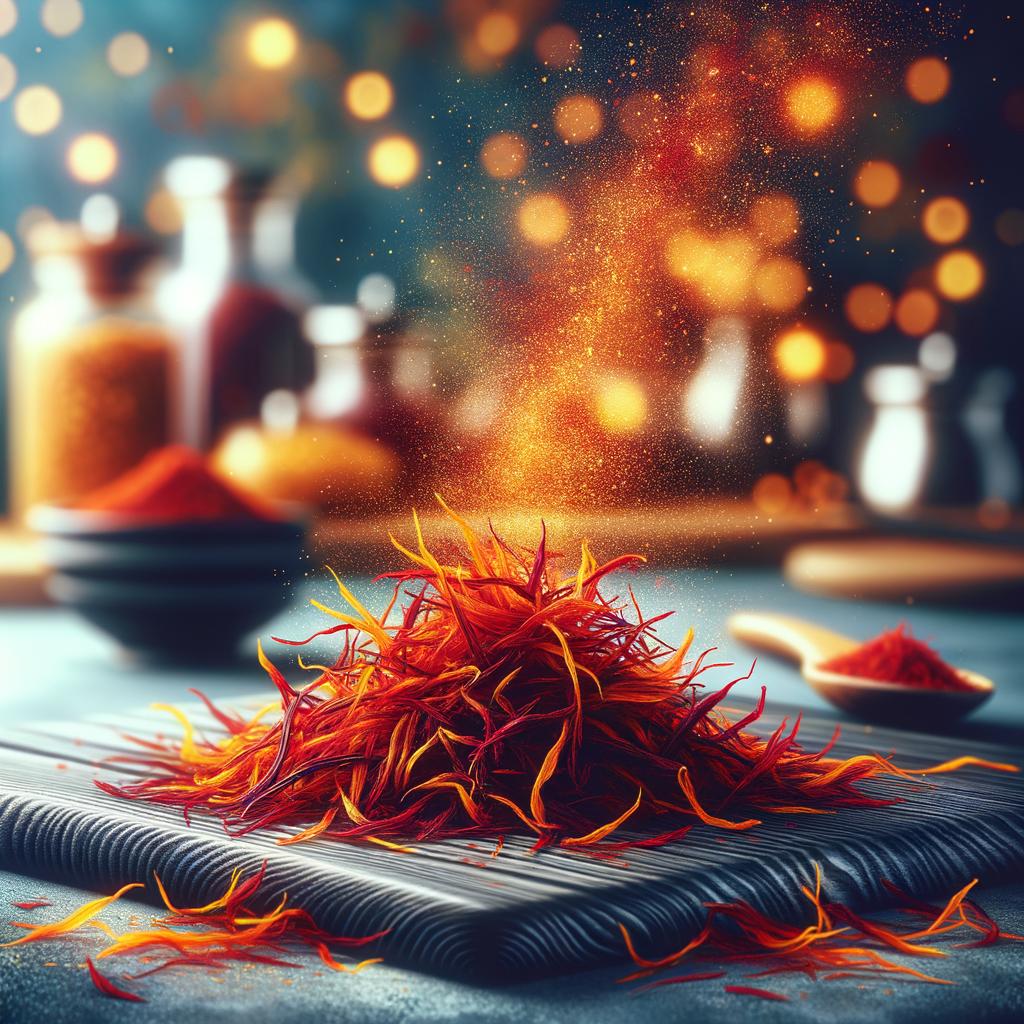Saffron Strands

Description
Saffron, often referred to as the "Golden Spice," is a treasured ingredient that has been cherished for thousands of years. It is an exotic thread-like stigma plucked from the heart of the delicate Crocus Sativus flower. Each strand of saffron is a vibrant crimson hue, and its texture is soft yet resilient, capable of holding its own in the most robust of dishes. The flavor profile of saffron is as unique as its appearance: it imparts a complex, sweet, and floral taste with a subtly earthy undertone. What sets saffron apart from other spices is not only its distinct flavor but also its color transformation. When added to dishes, it imparts a golden yellow hue, adding a visual feast to the culinary experience.
Primary Uses
Saffron is a versatile spice, used in a plethora of culinary delights across the world. From the fragrant biryanis of India, the aromatic paellas of Spain, to the creamy risottos of Italy, saffron is a key component that adds depth and richness. It's also used in baking and desserts, such as French saffron buns or Persian saffron ice-cream. Beyond its culinary use, saffron has been used for medicinal purposes for centuries, particularly in traditional Persian medicine. Its cultural significance is immense, often associated with wealth and prosperity due to its high cost and revered status.
History
The history of saffron is steeped in enchantment and lore. It is believed to have originated in Greece, where it was revered as a symbol of joy and prosperity. The process of harvesting saffron is labor-intensive, which adds to its allure and high price tag. Each crocus flower blooms for only one week each year and must be handpicked during the early dawn hours. This painstaking process, combined with the fact that it takes approximately 75,000 saffron blossoms to produce a single pound of saffron spice, has resulted in it being more expensive than gold by weight. Over time, the use of saffron has spread globally, its popularity undiminished by the passage of time.
Nutritional Information
Despite being used sparingly in dishes due to its intense flavor and high cost, saffron packs a nutritional punch. It is rich in vitamin C, magnesium, iron, and potassium. It also contains carotenoids, which are powerful antioxidants. The health benefits of saffron include potential antidepressant properties, improvement in vision and heart health, and possible cancer-fighting properties. Compared to other spices, saffron's nutritional profile is unique due to its high content of both macro and micro-nutrients, despite being used in such small quantities. Thus, the Golden Spice continues to reign as a valuable ingredient, both in terms of flavor and health benefits.

